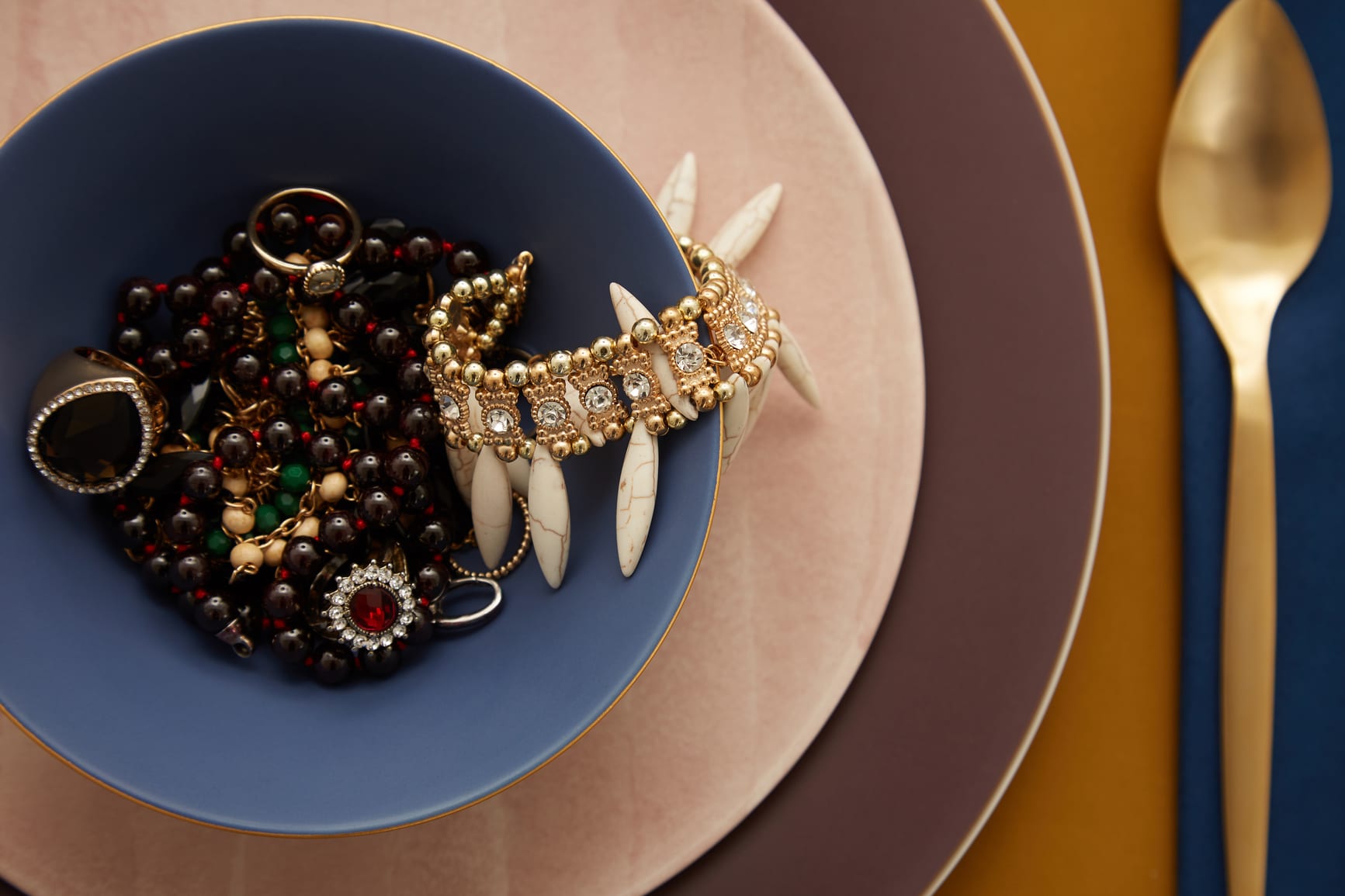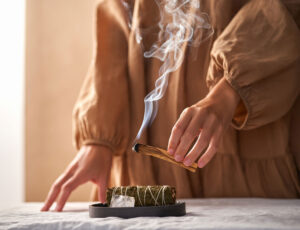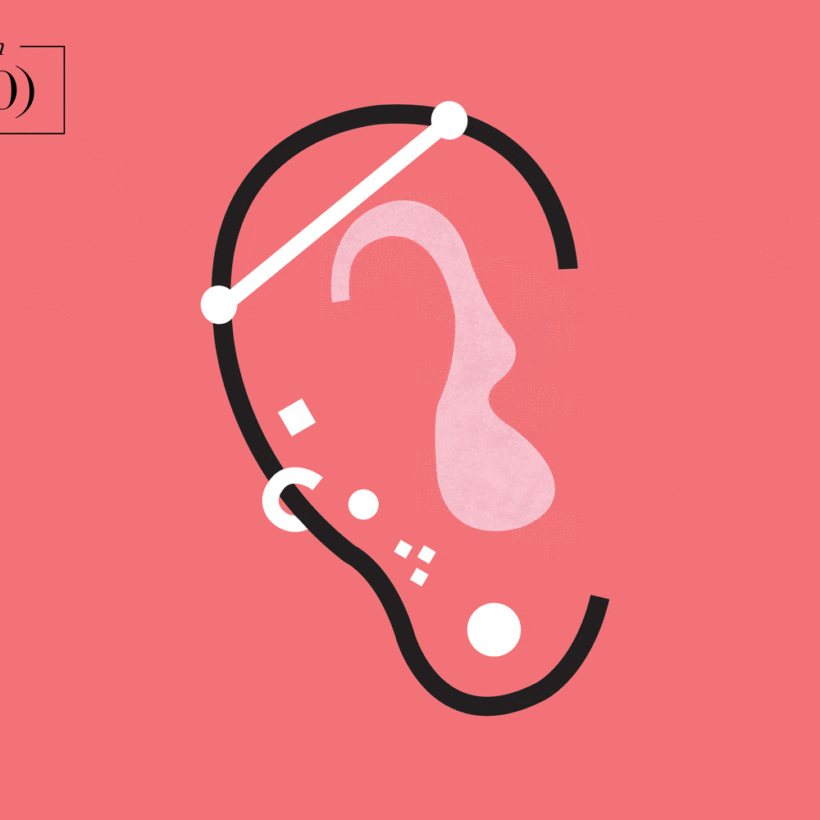Perhaps you’ve always worn accessories as a foolproof way to finish your outfit, or you’re amping up your workleisure game and using jewelry to take your casual clothes to a Zoom-ready level. But then, disaster strikes: You wear it for a few hours and you notice a gnarly red rash wherever you’re wearing your jewelry. So, what’s happening when you get this kind of reaction?
“Jewelry can cause basic atopic dermatitis. Patients with a history of highly reactive skin, sensitive skin, or a chronic condition like eczema are more prone to experience this kind of rash,” says Dr. Ava Shamban, board-certified dermatologist, co-host of THE GIST and founder of SKIN FIVE Clinics in Los Angeles.
Seventeen percent of women struggle with what’s called metal allergy or metal hypersensitivity, which normally exhibits as dermatitis — or skin irritation. Your derm can give you a patch test to determine whether or not you have a metal allergy, but they can usually simply tell by looking at your skin (red and itchy bumps or watery blisters).

It can be much worse if you specifically have a severe nickel allergy. “Nickel is a common alloy in jewelry, including 14K and 18K gold,” says Shamban. Gold, cobalt copper and chromium can also be culprits,” adds Elizabeth Charpiot Mackie, PA-C, a physician assistant at Bellaire Dermatology. If you have an allergy to nickel (or any metal), you will also notice it in other parts of your daily routine or lifestyle. “Your phone, tattoo ink, medication, or dental crowns could be culprits. Metal can also appear in your cosmetics and skincare containing gold flecks or compounds,” she says.
When it comes to your jewelry if you have a reaction it doesn’t mean you have to swear off your accessories for good. As long as you don’t have a severe allergy (which can cause headaches, nausea, and vomiting), here are some ways to work around it so you can hang onto your jewelry wardrobe:
- Layer your jewelry on top of clothing. If the outfit permits, wear your necklace outside of a collared shirt, so it doesn’t touch your skin.
- Try using duct tape. Yes, the old toolbox standby can also be used if the piece permits (like a wide acrylic bracelet with a strip of metal). The Mayo Clinic recommends covering the item in duct tape to prevent contact.
- Apply clear nail polish. The American Osteopathic College of Dermatology recommends reapplying clear nail polish to your earrings to prevent irritation. (Avoid doing this on a brand new piercing!) A layer on a pair of earrings or the inside of your rings can help reduce irritation with a metal allergy. If using clear nail polish isn’t an option for you for whatever reason, Nickel Guard provides an invisible barrier designed to do the exact same thing. Apply it to your nickel-containing jewelry regularly and you should see a decrease in irritation.
- Try different types of materials. “Platinum is least likely to cause a skin reaction,” says Shamban. You could also look for non-metal jewelry, like eclectic wooden bangles or beaded necklaces.

- Make sure your jewelry doesn’t get wet. “A build[up] of soap, detergents or other cleansers, which have their own set of surfactants or cleansing chemicals that can be topical irritants [or] even long term waterlogging of the skin if the water is captured under a ring band and the area is not dried, can create irritation, skin peeling and some erosion, inflammation and other skin reactions,” Shamban explains. This can also occur with sweat, dead skin cells, and body wash if you shower or work out in your jewelry.
- Take off your jewelry often. Remind yourself during the day to take off your accessories from time to time. Keep a small jewelry tray or stand on your work desk. Avoid sleeping in your accessories overnight. And, if you’re doing an activity like painting or gardening that will get dirt or grime trapped under your jewelry, make sure to take them off then as well.
- Clean your jewelry. It’s important to get your jewelry professional cleaned (they usually use ultrasonic technology and high-pressure steam to remove every bit of grime) at least once a year, but your pro might not be as accessible these days. “The safest way to clean fine jewelry at home is with good old soap and water. A quick internet search will tell you which stones are safe to soak; if you aren’t sure, err on the side of caution and just do a surface cleaning without soaking. For a deep clean, I let the jewelry soak overnight in Dawn dish soap mixed with warm water. After the piece has soaked, use a very soft toothbrush (baby toothbrushes are perfect) to gently clean around stones and under any openings,” says Allie Perry of Allie Perry Designs. If you have artificial jewelry, use equal parts of white vinegar and water and dip a soft toothbrush into the solution to gently scrub down your pieces.
- Keep your cortisone cream handy. Especially if your irritation is on the more mild side, Shamban recommends treating atopic dermatitis with cortisone after you remove your jewelry. More resistant or severe cases may require an RX strength of cortisone cream. “Using emollient creams such as petroleum jelly provide a barrier protecting the skin and could reduce the need for topical corticosteroids,” says Mackie. “Before starting any new treatment and if the rash worsens or does not dissipate within a week’s time, check with your board-certified dermatologist,” adds Shamban.Additional reporting by Christa Lee.We only recommend products we have independently researched, tested, and loved. If you purchase a product found through our links, Sunday Edit may earn an affiliate commission.








